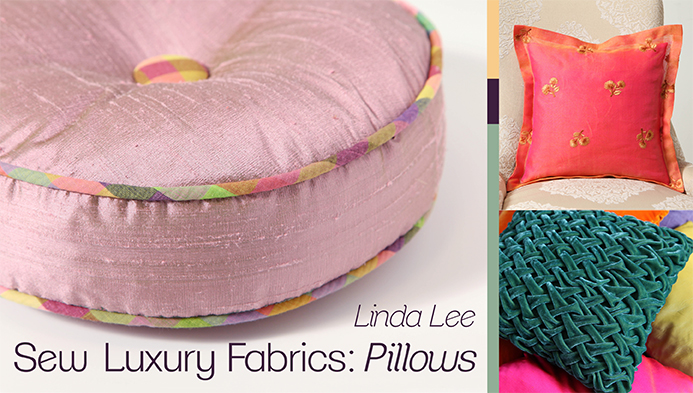Velvet Fabric - A Truly Luxurious Fabric With A Mind Of Its Own!

Some types of velvet fabric are easier to work with than others. Silk or rayon velvets are the most difficult, while cotton or polyester are the easiest to handle - a good choice if you are sewing this fabric for the first time.
While at the fabric store, keep in mind that it is best to line your velvet clothing as it might otherwise cling to your body. Keep the
basics of velvet fabric in mind when you shop for your fabric, pattern, and accessories.
Consider Your Pattern Style Carefully!
Try to pick a pattern style with simple lines, perhaps with fewer seams and darts to concern yourself with. Using a pattern that you have already used and successfully fitted to your body may save you the time and frustration of ripping out and redoing seams a second time!
If you really want to try a new style use some other fabric to make up a rough sample of your project. Solve any fitting issues before cutting your pattern out on the velvet.
If you enjoy working with these specialty fabrics I recommend looking at Claire B. Shaeffer's book below. Take a peek at the contents of her book. She provides valuable information on handling practically any fabric from A-Z.

She provides valuable information on handling practically any fabric from A-Z.
Velvet Fabric - Working With The Nap
You are able to feel the direction of the nap with your hand. When running your hand in one direction your fabric will feel smooth. Running your hand in the other direction has a rougher texture.
Notice that velvet fabric with a nap has different appearances depending on which direction you look at it. Velvet will appear darker and richer in color in one direction, and lighter with more sheen when going with the nap.

Choose the direction you will run your fabric and the pattern layout according to the look and feel you would like to achieve in your garment. Just be careful to be consistent in the direction that you cut your pattern pieces from the fabric. For best results sew your item in the direction of the pile.
When buying your velvet, buy according to the "with nap" fabric requirements on the back of the pattern. Be aware that you might need extra fabric if the width of your chosen velvet does not fit into the guidelines on your pattern. You may have to lay out the pattern pieces ahead of time to find out how much fabric you will need to buy.
Cutting Out Your Pattern Pieces
When sewing velvet, it is critical to keep the direction of the pile (nap) in mind. Cut all pattern pieces with the pile going in the same direction. Do not turn around or upside down pattern pieces on your fabric to try to save space and fabric. Again, this may mean that you need to buy more fabric initially.
I cut my pattern piece out on a single layer of fabric. Velvet shifts and creeps easily so mistakes can happen when trying to cut through double layers. Cut slowly and carefully. Remember to reverse your pattern pieces so you don't end up with two pieces cut for the same side of your body!
Mark your pieces using tailor's tacks, tailor's chalk, marking pens or pins. Be careful, however, to remove pins immediately after cutting as pinhole marks could otherwise become permanent.
Velvet frays easily. It is a good idea to leave generous seam allowances if possible. You will want to follow
special techniques for pressing, handling and caring for your velvet .
Sewing With Velvet Fabric - What To Expect
The pile on velvet fabric causes pieces of fabric to shift when sewing. To avoid this slipping and the resulting puckering, I prefer to baste all my seams by hand before sewing them on the machine. Some people find they get good results using a walking foot or a roller foot. You might consider buying these for your machine if you love the idea of working with napped or slippery fabrics.
I have also tried to use tissue paper between the fabric pieces, but find trying to tear the pieces away later just too annoying! It is a good idea to use some of your velvet scraps to practice on before starting your project to see how your particular velvet handles.
Some of the newer model sewing machines have a dual feed system included. This system allows the fabric to feed through your machine evenly from both the top and the bottom. This will prevent your seams from puckering.

Here's A Few Suggestions To Keep In Mind...
Related Articles
Go to CreativeSewingTips.com Home Page





